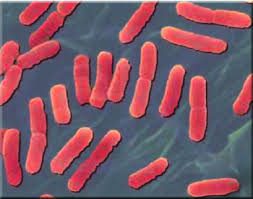What is the Human Impacts on Nutrient Cycles?
Human activities have resulted in large-scale changes in nutrient cycles. Human activities produce some effects on the nutrient cycles. Five input and five nutrient output processes have been identified in the nutrient cycles.
The consequences of the changes that occur in the nutrient cycles include eutrophication and the formation of marine dead zones.
Human impact to Nutrient Cycles
Below are the human impacts:
i. Shifts in land use patterns.
ii. Increased fertilization for high-yield crops.
iii. Lateral transfer of nutrients across ecosystem boundaries has changed the rate, pathways, and efficiency of nutrient cycling.
iv. Small-scale, low-input cultivation practices cause nutrient depletion when fallow periods are short.
v. Increased demand for food, fuel, and fiber requires supplementation of the natural nutrient supply by artificial sources. This doubled the inputs and nitrogen and phosphorus to ecosystems.
vi. The regulation mechanisms in natural systems and biological controls by plants and invertebrates have been impaired, where additional inputs and tillage are used for increased food production.
vii. Atmospheric deposition of nutrients from industry, agriculture, biomass fires, and wind erosion, spreads large quantities of N, P, Fe , and Si to downwind ecosystems over large regions (Brasseur et al. 2003).
Read Also: Framework for Water Pollution Control
What is the Nutrient Input and output Process?
Nutrient Input and Output Processes
Ecosystem nutrient balance is the net result of inputs minus outputs. The magnitude and duration of nutrient imbalance that can be tolerated are determined by an ecosystem’s buffering capacity.
What is Input Nutrients process?
The input of nutrients to ecosystems occurs through five processes:
i. Weathering of rocks produces small quantities of nutrients such as phosphorus, potassium, iron, aluminum, sodium, and silicon in natural ecosystems.
ii. Atmospheric input of nutrients through wet or dry deposition of elements has substantially increased through human activities.
iii. Biological processes include the fixation of atmospheric carbon (CO2) through photosynthesis, and atmospheric nitrogen (N2) through biological nitrogen fixation.
iv. Nutrients can be released from the biomass of dead organisms. The trade-in agricultural and forest products is a major pathway of nutrient transfer globally.
v. Direct anthropogenic inputs occur through fertilization practices in intensive agriculture and the release of human sewage and livestock wastes.
What is Output nutrients Process?
The output of nutrients from ecosystems involves five processes:
i. Soil erosion transports large quantities of nutrients from terrestrial to aquatic ecosystems. Erosion is accelerated by cultivation, overgrazing, and vegetation clearance. The essential nutrients most affected by erosion are carbon, phosphorus, potassium, and nitrogen.
ii. Leaching (the vertical flow of water in the soil profile) transports large amounts of nutrients in solution from the soil into groundwater and rivers, lakes, and oceans. Leaching losses of nutrients are highest in cultivated or disturbed environments.
iii. Gaseous emissions of CO2, CH4, and CO, etc. to the atmosphere from the decomposition of organic matter, digestion by animals, and fires.
Read Also: How to Clean-Up and Control Specific Pollutants

The conversion between inorganic forms of N leads to emissions of N2, N2O, NO, and NH3. Phosphorus has no significant gaseous forms in most ecosystems. Anthropogenic activities like ploughing, fertilization, fossil fuel burning, flooding, drainage, deforestation, and changes to fire regimes, have altered the amounts and proportions of emissions of nutrients to the atmosphere.
iv. The emigration of fauna or harvest of crops, forests, fish, or livestock removes nutrients. An export from one ecosystem means the import of nutrients to another.
v. The effective permanent removal of nutrients from the biosphere only occurs at a slow rate and through a small number of processes.
Consequences of Changes to Nutrient Cycles
Alterations of nutrient cycling include nutrient excess, leading to eutrophication, and nutrient deficiency linked to soil exhaustion and some specific natural situations in oceans.
a. Eutrophication of Aquatic Ecosystems
Eutrophication is the fertilization of surface waters by previously scarce nutrients (Carpenter et al. 1999).
This is due to human activities causing increased inputs of urban, industrial wastewater, and agricultural runoff containing C, N, and P. Eutrophication causes many changes in the structure and function of aquatic ecosystems and the services they provide.
The symptoms of eutrophication?
i. Increase in phytoplankton, benthic, and epiphytic algae and bacterial biomass
ii. Shifts in composition to bloom-forming algae, which may be toxic or inedible.
iii. Development of rooted macrophytes and macroalgae along the shores.
iv. Anoxia (oxygen depletion) in deep waters.
v. Increased incidence of fish and shellfish mortality.
vi. Decreases in water transparency.
vii. Taste, odor, and water treatment problems.
viii. Coral mortality in coastal areas.
Read Also: How Waste Papers, Metals, Woods, Glasses, and Plastics are Recycled
b. Marine Dead Zones
Low oxygen conditions in coastal marine waters result from enrichment in nitrogen which enhances phytoplankton growth. Dead phytoplankton sinks to the sea floor decomposition and consumes oxygen. The low oxygen concentration kills most marine life leading to the designation of ‘‘marine dead zones’’ (Brian et al. 2004).
These have been reported off South America, Japan, China, Australia, New Zealand, and the west coast of North America. The hypoxic conditions are seasonal in some regions, such as the Gulf of Mexico.
The occurrence of dead zones and their size appear to be a function of nitrogen inputs. Denitrification (which returns nitrate to the atmosphere as N2 and N oxides) occurs only when oxygen concentrations are low and becomes effective after the dead zone phenomenon has occurred.


